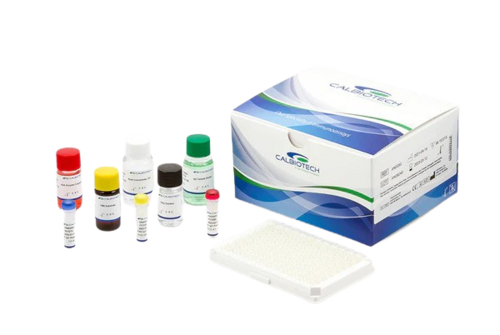Product Description
SUMMARY AND EXPLANATION
Human Ferritin is a large molecule with a molecular weight of approximately 450,000 Daltons, and consistsof a protein shell around an iron core; each molecule of Ferritin may contain as many as 4,000 iron atoms.Under normal conditions, this may represent 25% of the total iron found in the body. In addition, Ferrritincan be found in several isomers. High concentrations of Ferritin are found in the cytoplasm of thereticuloendothelial system, the liver, spleen and bone marrow. Methods previously used to measure iron insuch tissues are invasive, cause patient trauma and lack adequate sensitivity. The measurement of Ferritinin serum is useful in determining changes in body iron storage, and is non-invasive with relatively littlepatient discomfort. Serum Ferritin levels can be measured routinely and are particularly useful in the earlydetection of iron-deficiency anemia in apparently healthy people. Serum Ferritin measurements are alsoclinically significant in the monitoring of the iron status of pregnant women, blood donors, and renal dialysispatients. High Ferritin levels may indicate iron overload without apparent liver damage, as may be noted inthe early stages of idiopathic hemochromatosis. Ferritin levels in serum have also been used to evaluateclinical conditions not related to iron storage, including inflammation, chronic liver disease, andmalignancy.
PRINCIPLE OF THE TEST
This Ferritin ELISA kit is a solid phase sandwich assay method, based on a streptavidin-biotin principle.The standards, samples and the biotinylated Anti-Ferritin antibody reagent are added into designatedwells, coated with Streptavidin. Endogenous Ferritin in the patient™s serum binds to the antigenic site of thebiotinylated Anti-Ferritin antibody. Simultaneously, the biotinylated antibody is immobilized onto the wellsthrough the high affinity Streptavidin-Biotin interaction. Unbound protein and excess biotin conjugatedantibody are washed off by wash buffer. Upon the addition of the Peroxidase (HRP) conjugated AntiFerritin antibody reagent, a sandwich complex is formed, the analyte of interest being in between the twohighly specific antibodies, labeled with Biotin and HRP. Unbound protein excess enzyme conjugatedantibody reagent is washed off by wash buffer. Upon the addition of the substrate, the intensity of colordeveloped is directly proportional to the concentration of Ferritin in the samples. A standard curve isprepared relating color intensity to the concentration of the Ferritin.

